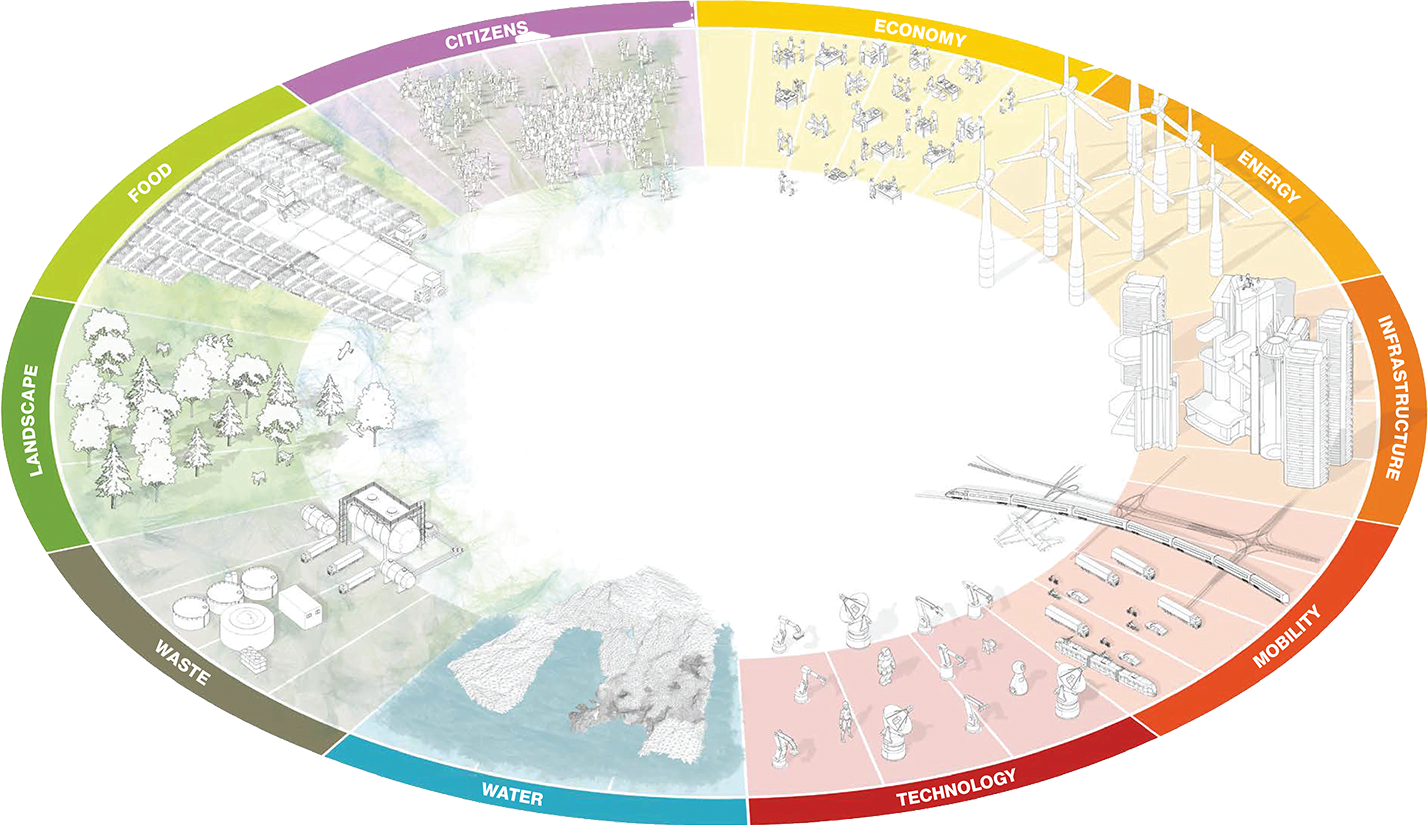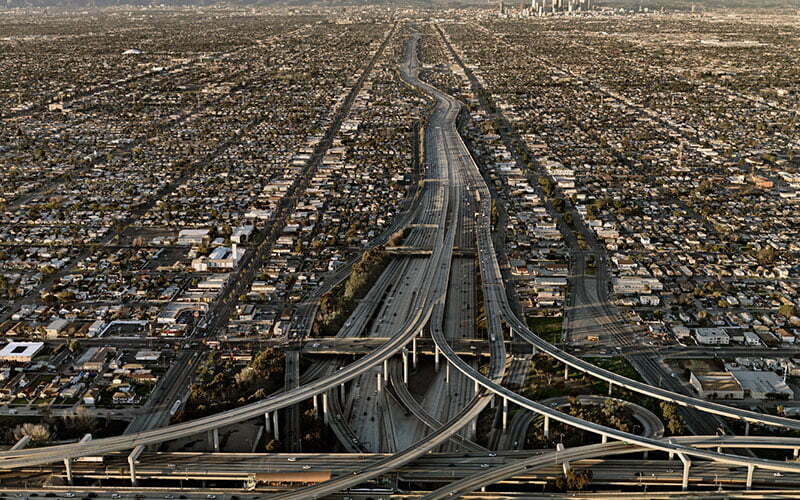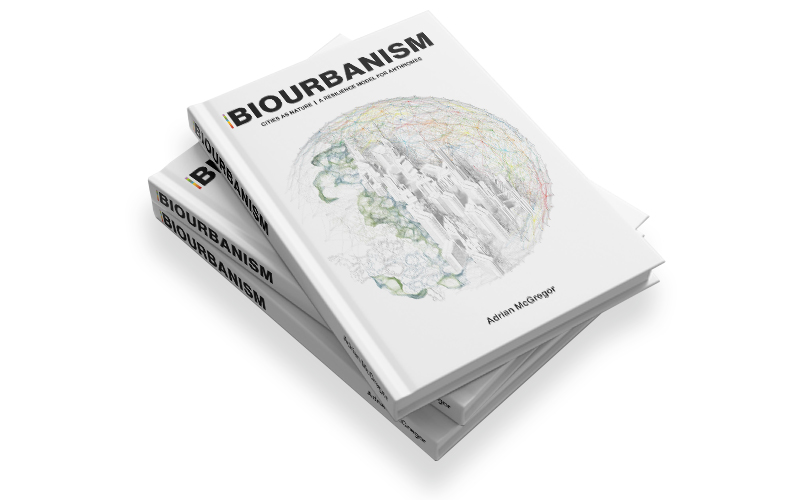What is
Founded on landscape architecture, urban design, and ecological sciences, ‘Biourbanism’ is a city planning and urban design model that increases prosperity by assisting mayors, city leaders and planners create healthier, more resilient cities.
Put simply, the science-led model asserts that cities must be considered as a form of nature, whereby Homo sapiens have modified wild biomes into anthromes. Developments in ecological science have underlined humanity’s impact on the planet, signalling earth’s entry into a new epoch called the Anthropocene — a point in evolution where Homo sapiens have become the dominant species on spaceship earth heavily impacting the biological systems upon which we dearly depend.
Comprising ten systems managed mutually through data and design, a paradigm shift in thinking will allow us to quickly decarbonise our cities and transform urban environments into more equitable, vibrant, climate resilient places that are better able to support the needs of their citizens.
Anthrome
Anthromes are Anthropogenic biomes – major ecological habitats that have been engineered by Homo Sapiens through modifications to the wild terrestrial biosphere. Cities are a form of anthrome.

Chapter One | The Rise and Fall of Cities
Chapter One outlines the history of cities, their rise and fall, and their dependence on the environment for survival.
The history and evolution of urban settlement is filled with examples of cities that have followed such progressions. Some destroyed by war and famine, others by environmental degradation and disease, some by social change – and others due to climate change and natural disasters.
A major challenge for urban designers and city authorities in the 21st century is that cities are now facing not just one type of catastrophe, but often a series of them simultaneously.
Chapter One proposes that we can learn from the successes and mistakes of the past to inform the creation of resilient cities for our future. As history has shown, only the smartest, most advanced cities will prosper and prevail.
Credit: iStock
Chapter Two | Converging Emergencies

Credit: Ryan Brenzier
Chapter Two examines the myriad challenges facing the more than 10,000 cities that exist today and is a call to action.
Humans have created incredible cities as our primary habitat. But in the process, we have inflicted vast damage to the wild biomes and ecosystems needed to support them.
We are now confronted with mounting social, physical and economic threats that have arisen from the poor design of cities and the waste they generate. Carbon emissions, a waste by-product of energy production, construction, and city operations, have created the climate emergency that is now placing massive economic and health stress on cities and their citizens. Cities produce 75% of global greenhouse gas emissions and their rapid decarbonisation is humanities greatest challenge to avert catastrophic planetary warming.
If cities are to survive these threats, they need better design to enable the building-in of resilience to future shocks and events, and they must transition rapidly to low-carbon technologies so that they are livable and competitive.
Chapter Three | Biourbanism
Chapter Three outlines the Biourbanism model.
A new systems-based blueprint for city design, Biourbanism comprehends cities as living anthromes, or Homo sapiens-modified biomes. It defines cities as living ecological constructs and vibrant habitats that are inextricably linked to the wild biomes, and novel ecosystems of their surrounding landscapes and those of the planet.
The Biourbanism model is based on ten interconnected systems that together determine the health, prosperity and resilience of cities. Implementing the model allows landscape architects, urban designers, planners, mayors, and bureaucrats to take a holistic view of cities to manage the intricate interplay between these ten systems.
The Biourbanism model consists of five bio (life-supporting) and five urban (non-living) systems. Optimum urban resilience is attained when one system is not adversely biased over another, and when the interrelationships of these systems are managed in a purposeful and mutually beneficial way.
Chapter Four | Resilience Action Plan
Chapter Four is a road map for deploying the principles of Biourbanism.
This global model caters for cities wanting to build visionary strategies that increase their resilience, improve their citizens’ health and drive prosperity through implementing positive change. It adopts systems-thinking planning processes and recommends the use of key performance indicators linked to open data-driven technologies to facilitate target setting and performance tracking.
The chapter outlines the Biourbanism Resilience Action Plan, which adopts a phased onboarding and implementation workflow that can be readily adopted by city leaders. It proposes actions for decarbonising cities and presents global case studies that showcase successful implementation of the Biourbanism model.

Credit: Edward Burtynsky

